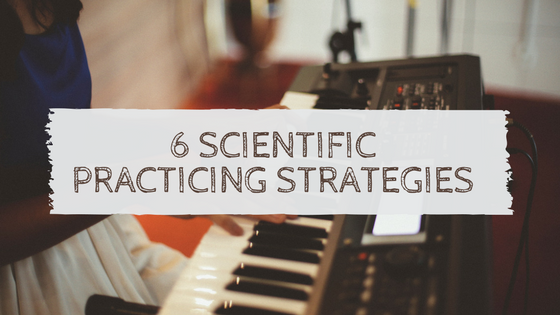I often read articles about the science of learning and research on the brain. One of my children has developmental differences, and so I am always seeking “out of the box” ways to help his brain connect the dots. As a piano teacher, I always want to be able to support my students with their practicing and learning. I want to help my students become musicians who are confident in their abilities and who progress and feel successful as they move through their studies.
I recently read an article from LearningScientists.org about effective learning and how these can be implemented in the classroom setting. I’m taking it one step further and applying these strategies to a musical learning setting. Try these things at home and take notice of how they support your child’s progress in piano!

Strategy #1: Spaced Practicing (space out practicing over time)
Rather than going through all your technique exercises and music in one sitting, space it out throughout the day. Try practicing a little bit after school, a few minutes before dinner and a few minutes before bedtime and see what happens.
Strategy #2: Retrieval Practicing (practice bringing information to mind)
If you’re working on memorizing a piece — or even committing a certain scale or chord pattern to memory, try putting away your music and see how much you remember without looking. The brain has to work to “retrieve” the information, which helps strengthen the memory and supports more effective and permanent learning.
Strategy #3: Elaboration (explain and describe ideas with many details)
Whenever I introduce a piece to my students in my lesson videos of Busy Kids Do Piano, we take a moment to analyze the music, discussing the form, looking for patterns that repeat themselves, finding familiar chords, analyzing the key signature. Students then feel the piece is more accessible and less overwhelming, and it also helps them remember important terms and definitions we have learned in the past.
Strategy #4: Interleaving (switch between ideas)
Mix up what you are practicing so that you aren’t just spending your entire session on one piece or concept. Working through things in a different order can strengthen understanding. It helps your brain to make links between concepts as you switch around. Try playing a scale, a little bit of music, doing some written theory, and then playing the scale again. The next day try things in a different order.
Strategy #5: Concrete Examples (specific examples help understand abstract ideas)
Analyzing music (discussed in #3) and finding examples of theory concepts that are utilized in a piece is helpful. Students then see the link between a concept they’ve learned and how it applies to a piano piece. Written theory and visual examples of concepts make things more concrete for students. This is why I encourage things such as color coding triads in my online lessons.
Strategy #6: Dual Coding (words and visuals)
Connecting words and images can be helpful in supporting students to learn. Sometimes if a student is having difficulty with a rhythm, we will come up with a word pattern to help. So if a student is having difficulty counting a triplet pattern, rather than counting “1-and-a” I might suggest saying “straw-ber-ry” and put a sticker of a strawberry above the note.
Have fun brainstorming ways that you can utilize these scientific strategies in your own or your student’s practicing!





Love it
I love to read your articles